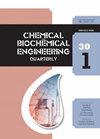聚羟基烷酸酯-连接属性,应用和寿命终止选项
IF 0.9
4区 生物学
Q4 BIOTECHNOLOGY & APPLIED MICROBIOLOGY
引用次数: 39
摘要
说到“生物塑料”,我们目前注意到这个话题非常复杂,最重要的是,有大量相互矛盾的立法,使不充分知情的消费者感到困惑甚至误导。因此,本文展示了微生物聚羟基烷酸酯(PHA)生物聚酯作为严格意义上的“生物塑料”的主要类别。特别是,PHA的生物降解性作为其提升当前塑料废物情景的核心优势,在生化基础上进行了阐述:这涵盖了细胞内和细胞外PHA降解所涉及的酶机制的各个方面,以及影响生物降解性的环境因素。重要的是,PHA的可降解性与这些材料的潜在应用领域有关。进一步展示了PHA在原料、合成方式、可降解性和可堆肥性方面的特殊性如何不同于作为“生物塑料”销售的其他聚合物材料,突出了PHA作为循环经济中“绿色”塑料产品的独特卖点。此外,目前适用于PHA的标准、规范和证书是“生物塑料”直接、科学分类的基础。本文章由计算机程序翻译,如有差异,请以英文原文为准。
Polyhydroxyalkanoates – Linking Properties, Applications and End-of-life Options
When it comes to “bioplastics”, we currently notice an immense complexity of this topic, and, most of all, a plethora of contradictory legislations, which confuses or even misleads insufficiently informed consumers. The present article therefore showcases microbial polyhydroxyalkanoate (PHA) biopolyesters as the prime class of “bioplastics” sensu stricto. In particular, biodegradability of PHA as its central benefit in elevating the current plastic waste scenario is elaborated on the biochemical basis: this covers aspects of the enzymatic machinery involved both in intra- and extracellular PHA degradation, and environmental factors impacting biodegradability. Importantly, PHA degradability is contextualized with potential fields of application of these materials. It is further shown how the particularities of PHA in terms of feedstocks, mode of synthesis, degradability, and compostability differ from other polymeric materials sold as “bioplastics”, highlighting the unique selling points of PHA as “green” plastic products in the circular economy. Moreover, current standards, norms, and certificates applicable to PHA are presented as basis for a straight-forward, scientifically grounded classification of “bioplastics”.
求助全文
通过发布文献求助,成功后即可免费获取论文全文。
去求助
来源期刊
CiteScore
2.70
自引率
6.70%
发文量
23
审稿时长
>12 weeks
期刊介绍:
The journal provides an international forum for presentation of original papers, reviews and discussions on the latest developments in chemical and biochemical engineering. The scope of the journal is wide and no limitation except relevance to chemical and biochemical engineering is required.
The criteria for the acceptance of papers are originality, quality of work and clarity of style. All papers are subject to reviewing by at least two international experts (blind peer review).
The language of the journal is English. Final versions of the manuscripts are subject to metric (SI units and IUPAC recommendations) and English language reviewing.
Editor and Editorial board make the final decision about acceptance of a manuscript.
Page charges are excluded.

 求助内容:
求助内容: 应助结果提醒方式:
应助结果提醒方式:


